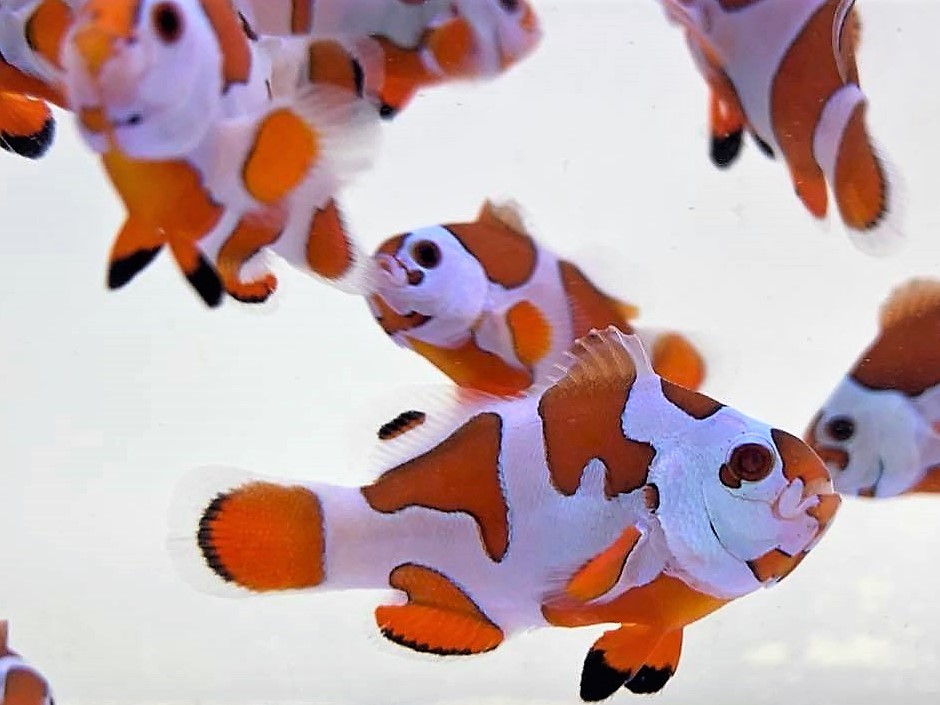Probably, but few want to after realizing how much time it takes. Most hobbyists know nearly all clownfish sold are captive-bred. You may wonder what it takes to do it yourself. Your favorite fish store certainly has lots and while the bulk of those do come from large hatcheries, some come from home breeders.
Through my own experiences, I’ve learned there is room in a crowded market for at-home or even small-scale commercial breeding both here in Canada and in most places in the world. However, breeding clownfish, the easiest marine fish to breed at scale, is still considerably more complex and time-consuming than coral farming both as a side hustle or a full-scale operation.
I’ve been breeding for almost four years now and currently have a business that continues to grow. Starting wasn’t easy, despite the fact clownfish have been captive-bred for decades. Information is scattered throughout the internet and books are only getting older and new ones aren’t getting published.
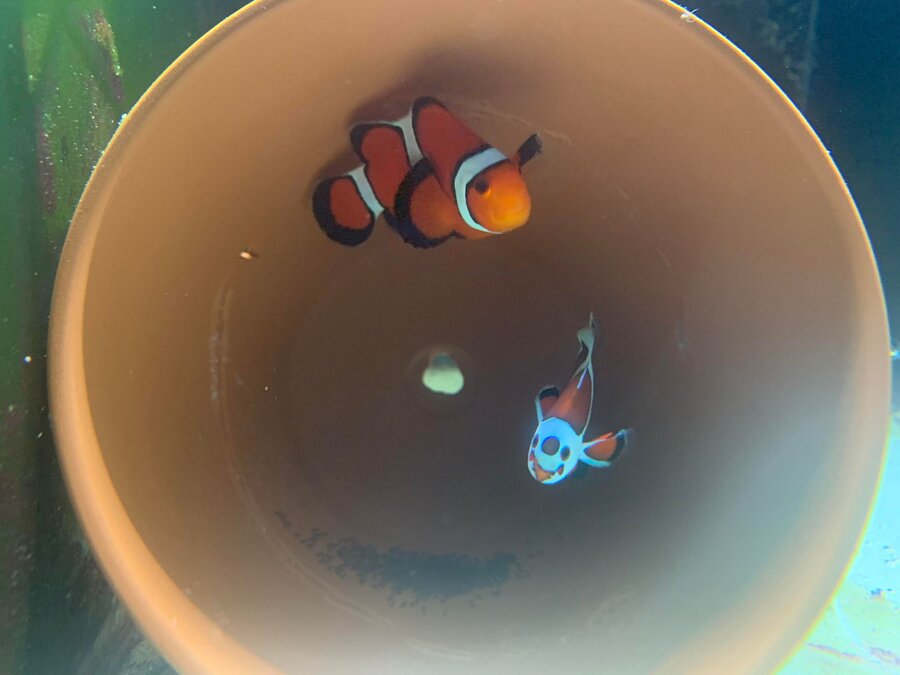
Joyce Wilkerson’s Clownfishes is still useful but is now twenty-five years old. Secrecy regarding methods still exists among small breeders. The secrecy in the hobby reminds me of how some seasoned SPS keepers at one time didn’t share their water parameters and other tidbits.
Discussion with breeders can be helpful, but like reefkeeping, different methods can lead to similar success. It’s going to take some time to find a method that is successful, so it’s very important to take notes. One thing I learned as I grew is that success is not a constant up and up, there are downs and stagnation and everything in between. Taking more detailed notes from day one would have been helpful as I often scratched my head as to what I was doing differently then, compared to now.
Vegetables can take as little as weeks from plant to harvest. Many corals are ready to frag quickly but clownfish take longer. Those 1.5 inch (4cm) clownfish you see are about 6 months old but if you’re looking at a clutch of eggs in your aquarium today it’s probably going to be a few additional months plus those 6 before you have ready-to-go baby fish.
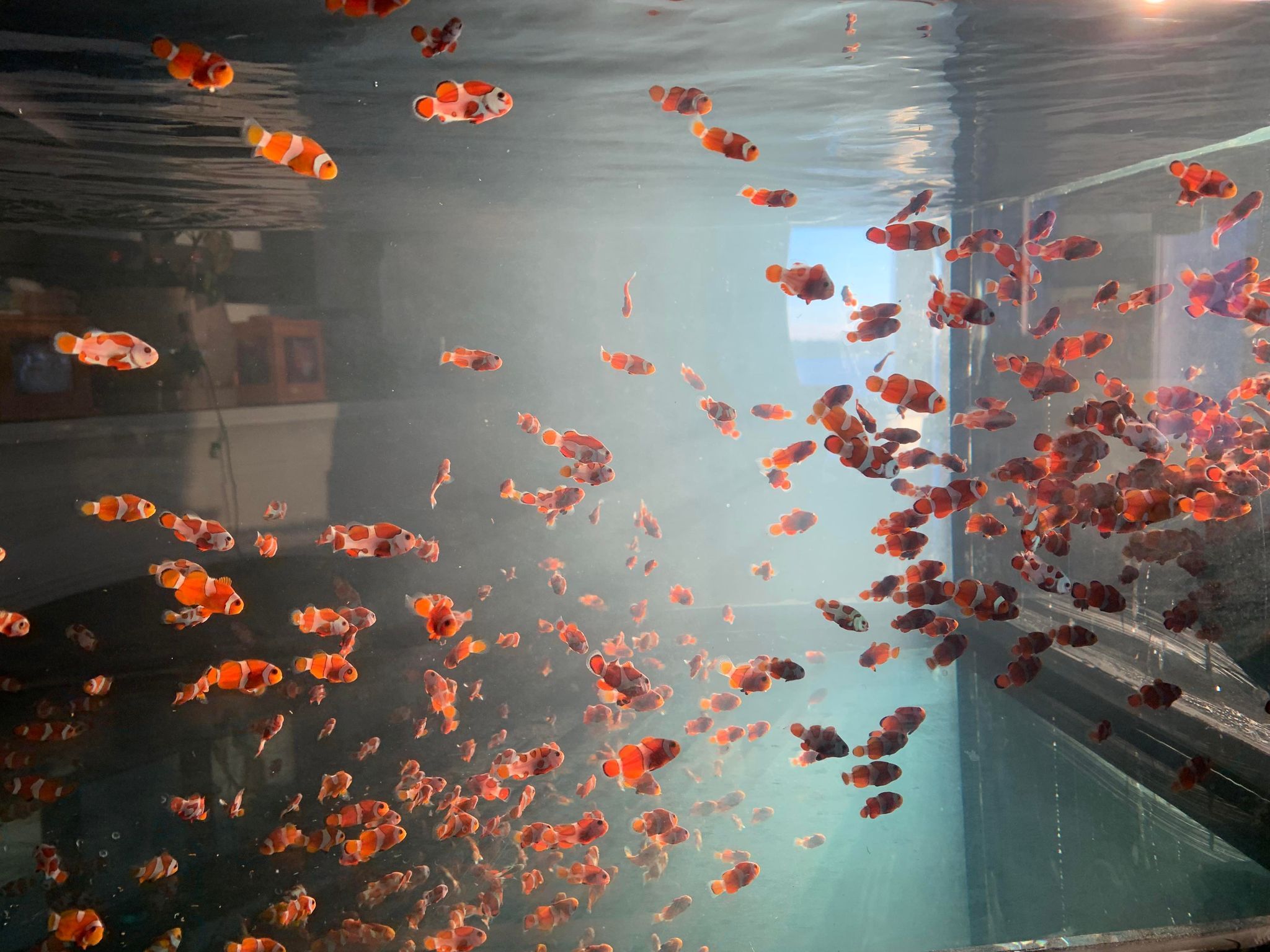
Even a one-time breeding project is likely to approach a year in length. This is not to say breeding clownfish is that difficult – if you are a reef keeper you almost certainly can do it, but like your reef, you need to manage your expectations and put in the time.
My breeding started near the beginning of the pandemic, and as things returned to normal I quickly realized I was happier spending more time at home working on raising fish. While I had all the time in the world initially, eventually I tried to step away for a day or 2 max, if only to recharge.
You need food for the larvae and food for the larvae’s food. Buying everything all ready to go is an option but it’s a far better learning experience and considerably cheaper, even if you don’t have aspirations of a larger scale to buy starter kits, to culture them yourself. Before you know it, jars and buckets are bubbling everywhere in your house.
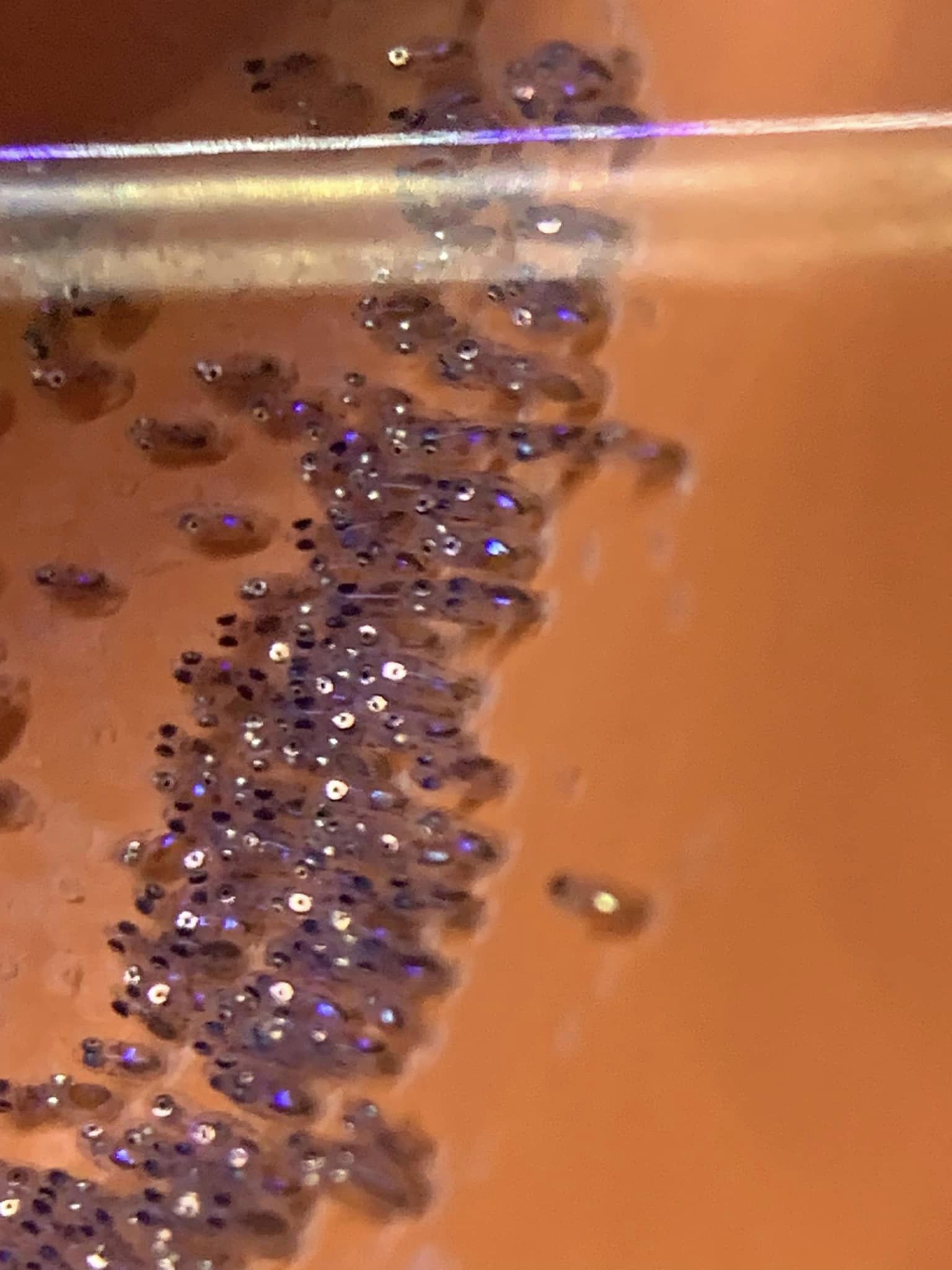
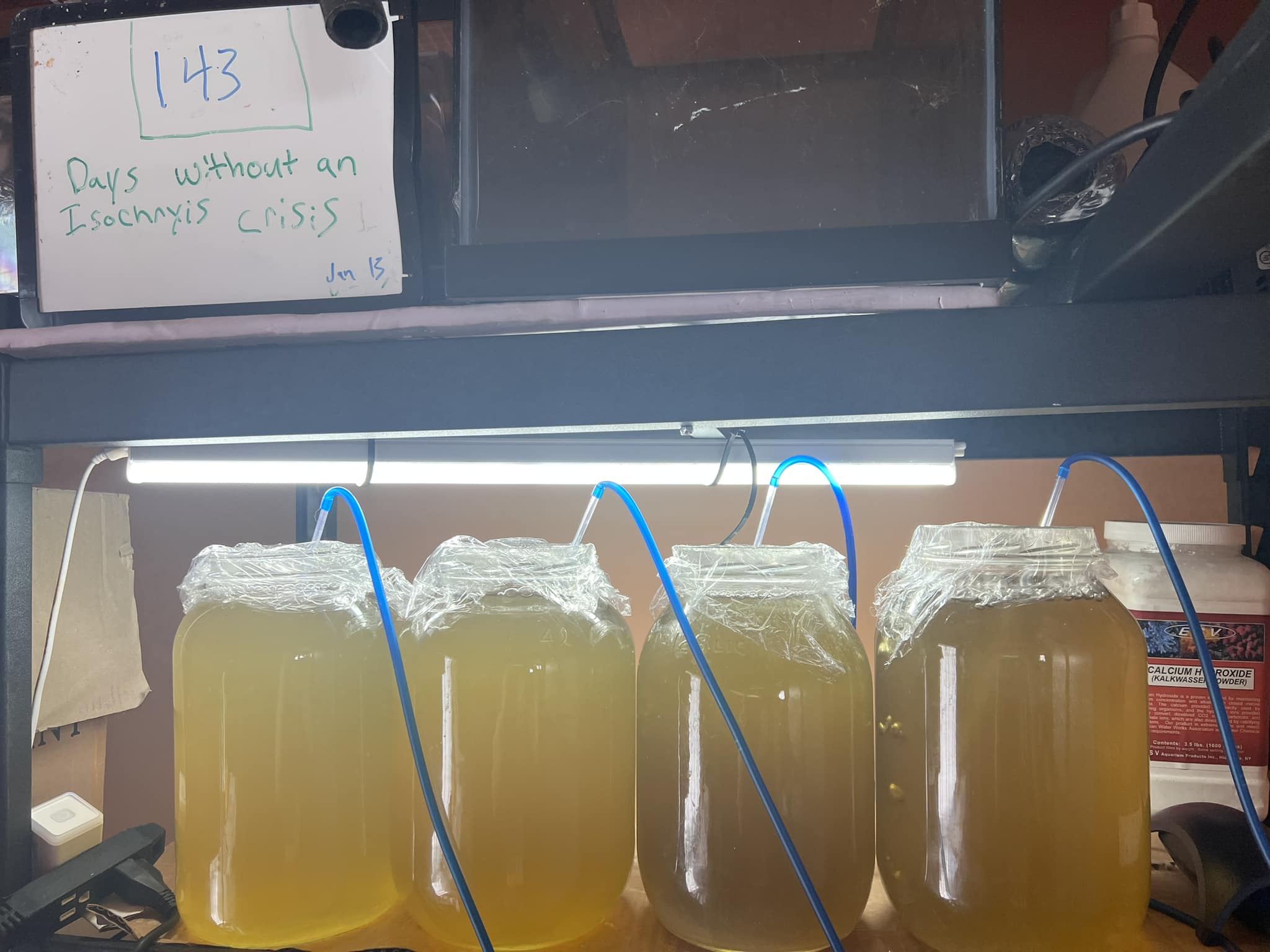
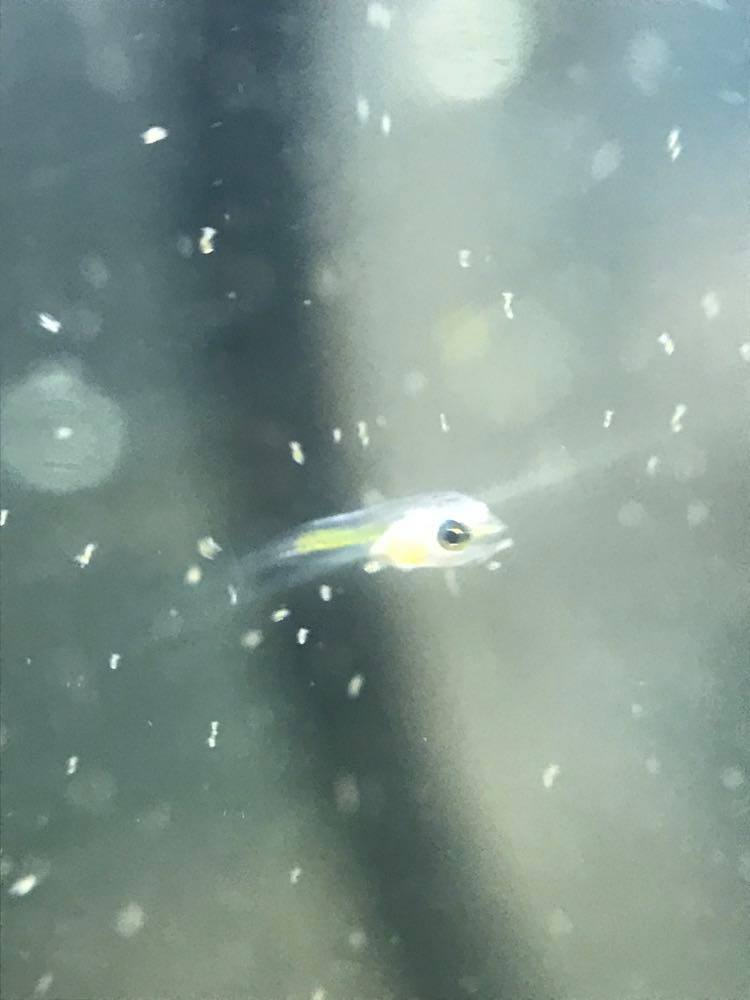
Rotifers are the first food for clownfish larvae, even though they don’t carry much nutritional value. Reed Mariculture sells rotifers 1 million at a time, but you’re going to need much more than a million even to raise a single clutch. The nutrition comes from the rotifers’ food. Typically that is either live phytoplankton, which you can culture yourself, or a concentrated blend you can purchase. Keeping millions and potentially billions of rotifers in a small volume of water means water quality can quickly become an issue.
Once you have a good culture you need at least one backup as crashes are going to happen. Most crashed cultures are salvageable but this takes time and new breeders are not going to want to wait, have more than you need, and give your reef a treat with the excess.
You will want them to eat pellet food as soon as possible. TDO is what most breeders use, it conveniently comes in various sizes, starting in a small size that is comparable to reef roids up to regular-sized pellets. As they grow, I start mixing in frozen food. It’s important to feed a variety so that when they go to the fish store, and then to their forever homes, they are going to keep eating.

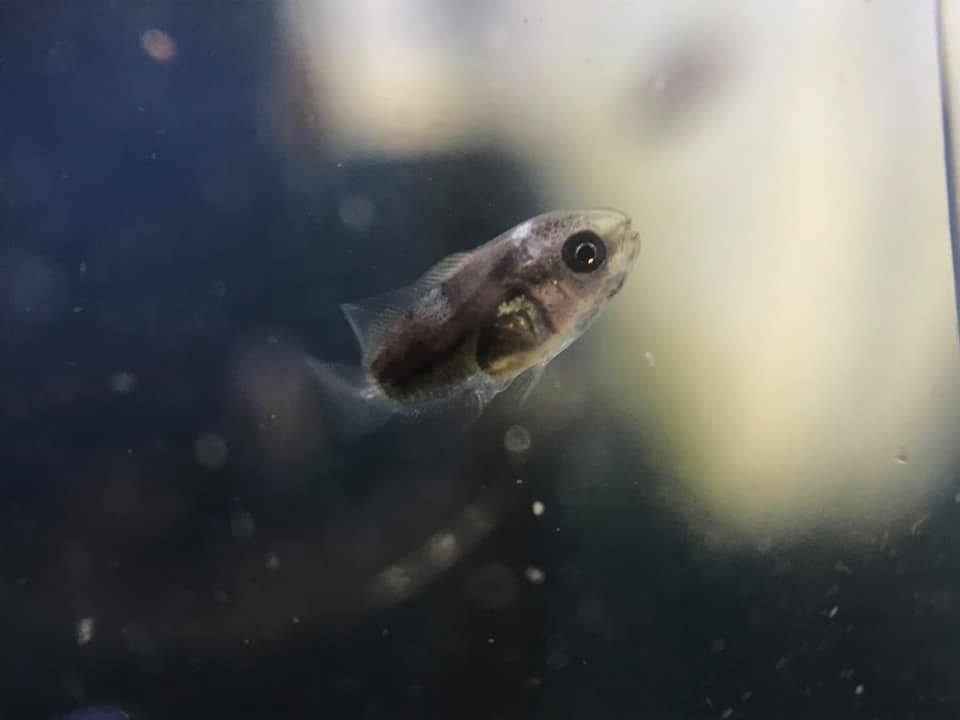
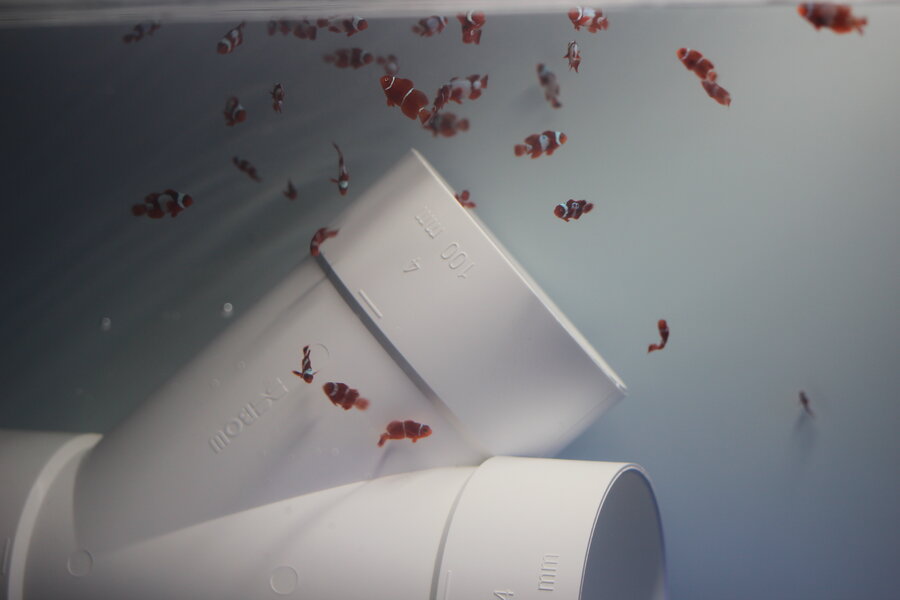
As the fish grow, it’s time to start thinking about culling. They may seem “perfect” to you initially. Sadly that’s not going to be the case for all, but results should improve with experience. Look out for obvious defects such as flared gills. Some of these do end up making it to retail. As a small breeder, your small quantities make it easier to maintain quality control.
Examine the fish, and putting them in small containers makes this process easier. Besides flared gills, deformed spines, fins, extreme underbites, and other issues can arise. All of these are not necessarily culls, but as soon as you put down your proud parent glasses and examine your fish, you will see why some still prefer the beauty of wild-caught.
One benefit to having deformed but otherwise healthy disease-free fish is it can allow you to keep predator fish since when keeping predators, feeding is usually the biggest hurdle. I never would have had the experience of keeping frogfish, among other predators, without the culls.

You can, of course, keep these deformed fish for yourself. Another use for them is canaries in previously diseased tanks, some will suffer quality of life problems and things like open gills will make them more susceptible to disease, but you should not sell or even give these fish away except as feeders.
Whenever water quality problems occur, it’s the defective fish that die first. While unsure how much of this can be passed on for breeding purposes, we always try to select the best possible specimens. You’re not saving wild fish by putting these undesirables to market.
Near the start, I decided instead of taking the time to sell the fish individually, I wanted stores to sell them for me – taking batches all at once, leaving me to focus on producing fish not rehoming. As a long-time reefer who frequents many LFS, I started there. Dealing with businesses who already knew me as a frequent customer made it easier.
If you don’t have a relationship with your end buyer, it’s a good idea to be professional. If your aspirations are lower, you can simply ask for store credit and maybe a little cash but if you’re going to be a steady supplier it’s best to become a registered business. Invoicing and tracking expenses will make things easier come tax time and a lot of customers will want that receipt since buying the fish from you is a business expense for them.
Pricing can be difficult. Many only see the price the store charges, not what they are worth. A good rule of thumb is that wholesale is one-third retail, but this can vary some. I don’t aim to be the cheapest, I aim to be competitive in pricing and superior in quality. Maybe I’m supplying less but the quality is generally superior. Store credit should also be fair to both parties and by taking credit you are double supporting them.
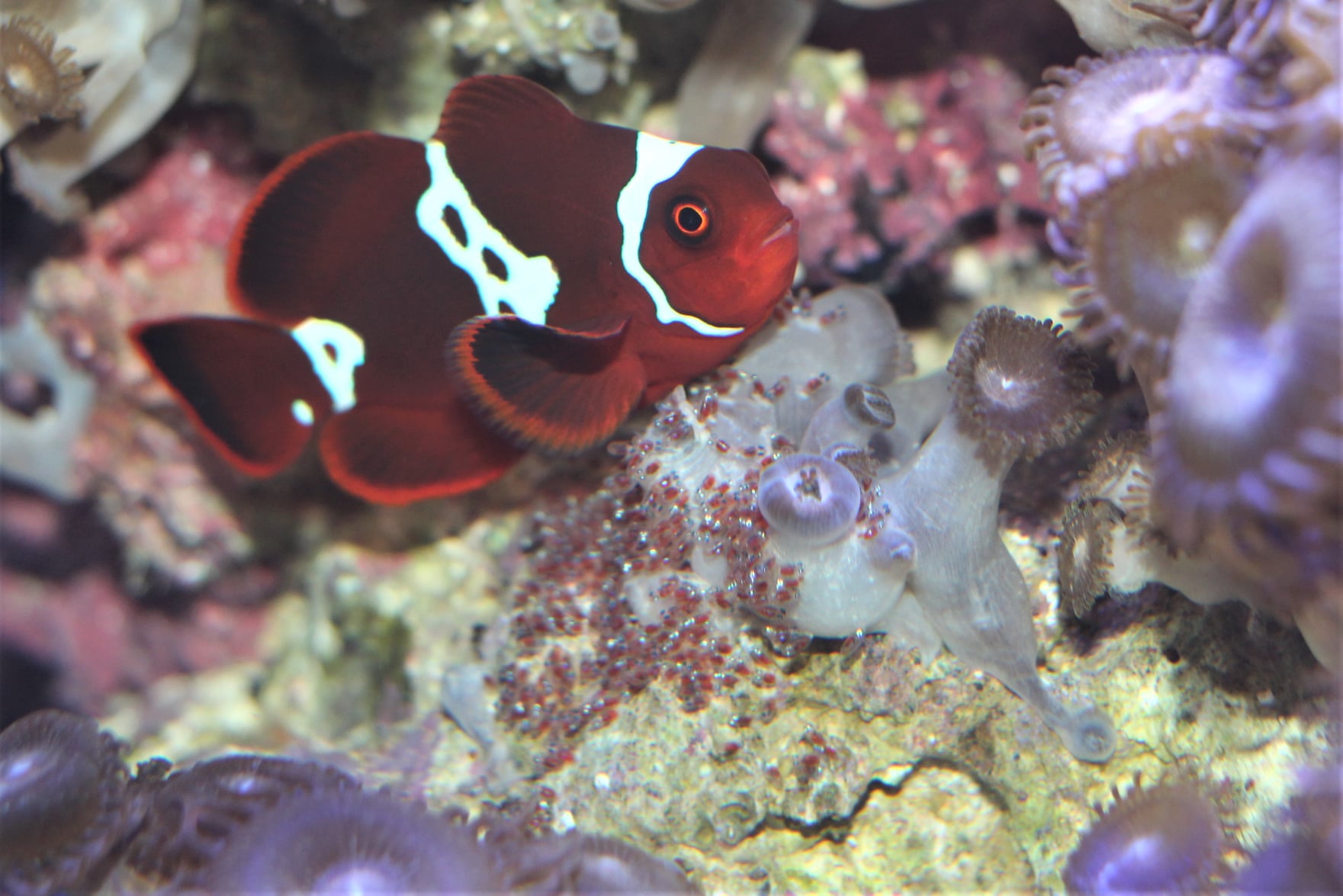
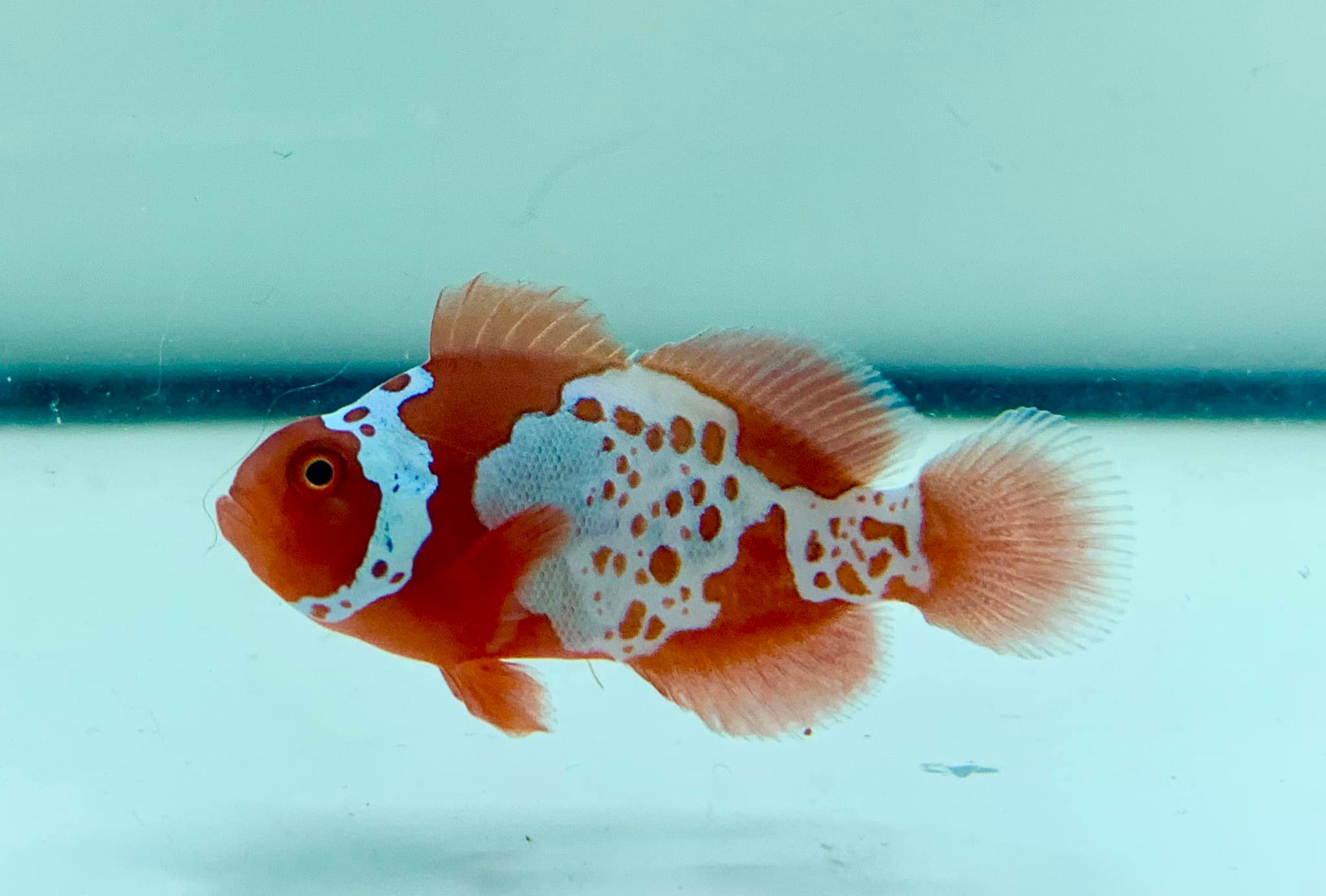
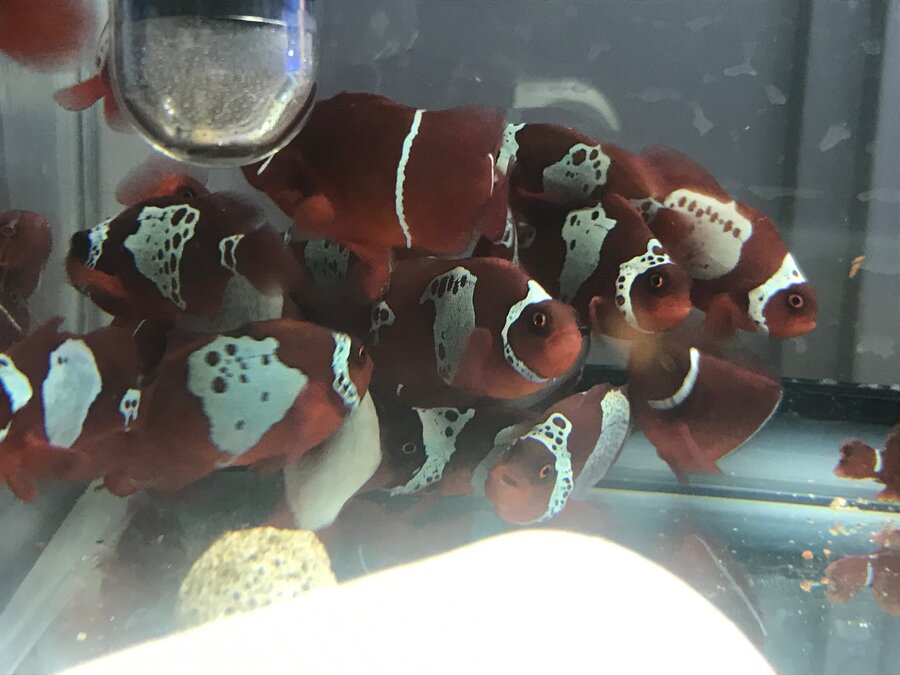
I started with lightning maroons, years after the craze. Maroons are nowhere near as popular as ocellaris. The maroons were just my pets that started to spawn and I simply wanted to make enough to buy more fish. I raised hundreds, which took some time to move. I did sell them all, but a mistake I made was stopping production when I still had hundreds as they take several months longer than ocellaris to reach saleable size. Sometimes it’s little things such as that.
I scaled down maroons so I could scale up ocellaris, namely the “Orange Storm” variety. Much easier to move, breeding profits from these went 100% into expansion. Everything went to tanks, 2x4s, air pumps, and a weekly trip to the dollar store for everything from pitchers to flowerpots. By this point, humidity and electrical bills noticeably went up but I started to think “I can make this work.”
I’m now nearing the point where this could become a full time job, really two full time jobs with one salary. Designer morphs are always going to sell for more but almost always the demand for regular “Nemo” will exceed them. Recently I purchased a 40-foot refrigerated shipping container. I went this route because it was the cheapest external building I could get.
The container is insulated, so as soon as the ground thaws, water and electrical lines will be dug and I can fill it with fish. While you certainly could do better than me, if your aspirations are profits you’re probably better off with a coral farm, or even a “real” job, but if you love fish and not too many other things take up time in your life it certainly is possible to become a real fish breeder.
About the author
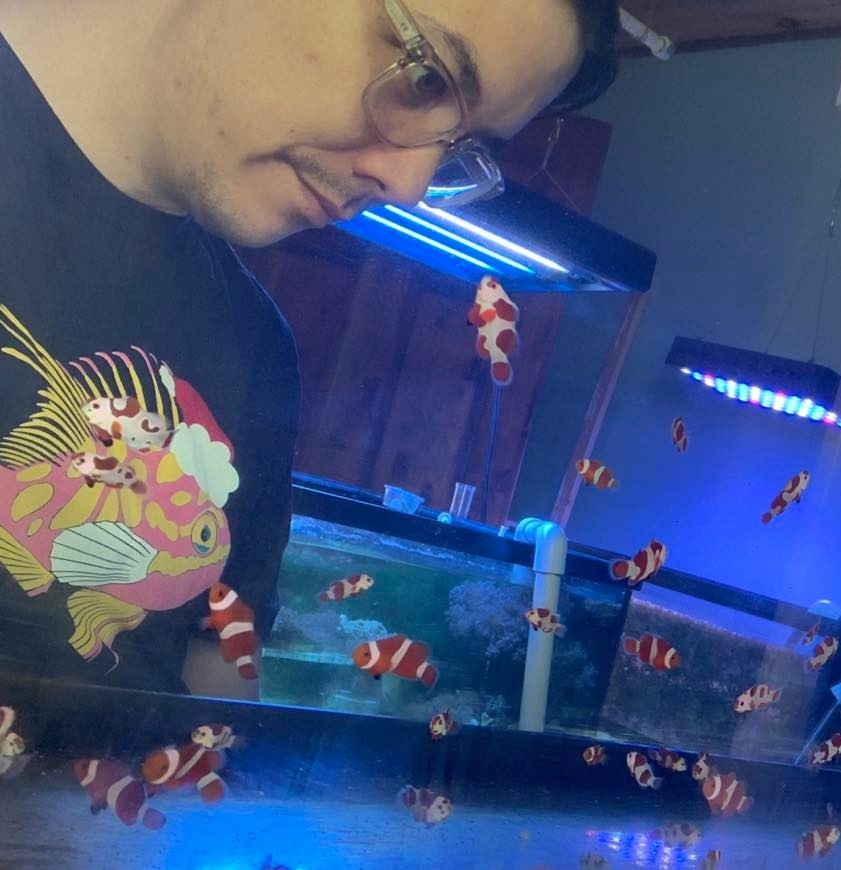
Andrew Kwon is a long-time reef hobbyist with nearly 20 years experience keeping everything from soft coral-dominated reefs, to unusual creatures such as Dwarf Cuttlefish (Sepia bandensis) and Spotted Garden Eels (Heteroconger hassi) and oddball corals such as Rhizotrochus typus, Snake Polyps (Isaurus tuberculatus) and nearly everything in between. In 2020 he started breeding clownfish and at the start of 2023 founded Captive Bred Canada a small but growing wholesale supplier of clownfish in Canada. As a hobbyist first and a business second, he focuses on producing quality fish with the hope of funding more exotic marine and reef keeping projects.


